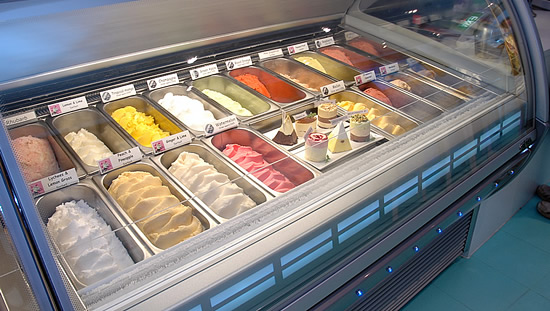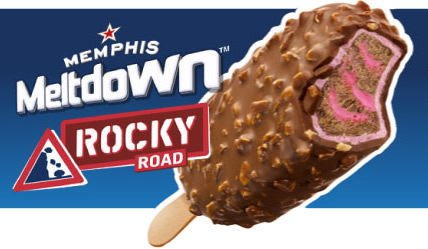|
2007 - Tip Top closed its Blenheim Rd, Christchurch
export plant.
The Ice Cream Code Of Practice
2002 - The NZ Ice Cream Assn published the ice cream industry's
voluntary quality and food safety standard - an Ice Cream Code
Of Practice.
This "outcome-based, HACCP-based, science based Code of Practice
(COP) for the specialist manufacture of ice cream contains minimum required
food safety standards agreed by the Ministry of Agriculture and Forestry
(MAF), the Ministry of Health (MOH) (responsibilities now incorporated
into the New Zealand
Food Safety Authority - NZFSA, itself since incorporated into
the Ministry of Primary Industries, MPI) and the ice cream industry.
The Code of Practice forms a basis from which businesses can develop
a food safety programme (FSP) or product safety programme (PSP) for the
production of ice cream for sale in New Zealand and Australia."
Lick or Spoon?
22 October 2008 - It's the question on every ice cream-lover's
lips - does ice cream taste better when licked off a cone, or when eaten
with a spoon?
Massey University sensory scientist Kay McMath was reported
in The Press as putting her scientific weight on the side of
the lickers. McMath, who is also Chief Judge for the New Zealand Ice
Cream Awards, said the flavour and aroma in an ice cream is released
when warmed inside the mouth. Licking coated the tongue with a thin layer,
so it was more quickly warmed and the flavour readily detected by the
tastebuds.
Eating icecream with a spoon delivered a larger volume and smaller surface
area to the roof of the mouth, tending to keep the ice cream colder for
longer, before swallowing.
McMath said that because ice cream was eaten in smaller amounts when
licked, the full melt and flavour was released with every lick.

Lick this! Much Moore Ice Cream on a cone
- Much Moore.
In 2008, Invercargill's Deep South won
the Best Standard Vanilla ice cream category a the NZ Ice Cream Awards
for the sixth year running. Deep South could justifiably claim to make
the best ice cream in the country.
Gelato & Sorbet
The 1990s and 2000's had seen further consolidation
of the ice cream manufacturing industry, but it also saw the appearance
of small, specialist and artisan producers offering traditional European-style
ice creams, upmarket super premium ice creams, and healthier, more 'natural'
frozen treats such as sorbets.
Italian-style gelato, in particular, could command higher prices than
standard scoop ice cream, with attractive presentation, strong flavours
and a boutique, hand-made image.
Gelato producers began to pop up all over the country.

Gelato, sorbet and ice cream dessert display, Ginelli's, Mission
Bay, Auckland, 2010.
- Chris Newey.

2010 - Tip Top produced the world's
first novelty ice cream wrapped in marshmallow, Memphis Meltdown
Rocky Road.
A team of 100 people spent more than 2,000 man hours and went through
12,500 litres of pink marshmallow before finally coming up with the final
product, a chocolate ice cream rippled with raspberry jelly, dipped in
pink marshmallow, and smothered in chocolate, nuts and coconut - on a
stick.
December 2010 - Deep South Ice
Cream was sold by the Simon family to Christchurch
business consultants Mike Killick and Alex Hopkins.
 2011
- 2020 2011
- 2020
 1991
- 2000 1991
- 2000
Sources, references and related sites:
Ginelli's
www.ginellis.co.nz
Kapiti
www.kapitiicecream.co.nz
Much Moore Ice Cream
www.muchmoore.co.nz
NZ Ice Cream Assn.
Tip Top Ice Cream
www.tiptop.co.nz
 Back to
The History of Ice Cream in New Zealand Back to
The History of Ice Cream in New Zealand |